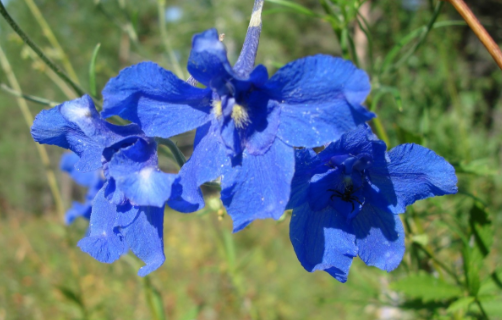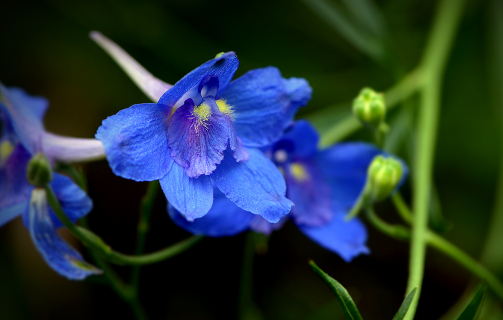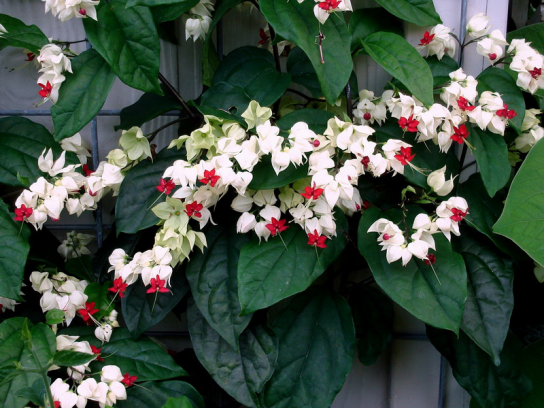Matters needing attention in the culture of emerald finches
Change the basin
With the growth of the plant, the nutrients in the soil will be gradually lost, which will make the growth of the plant weaker, so it is necessary to change the pot of the plant. The basin change is usually carried out once every 3 years.
Diseases and insect pests
Emerald finches will also be invaded by diseases and insect pests, such as black spot and soft rot of rhizome.

Spend the winter
The emerald Finch is a kind of plant with strong cold tolerance, but if it is sown in autumn, it needs to be put into a cold bed or cold room in winter to survive the winter.
Breeding methods and matters needing attention of emerald finches
The culture methods of emerald finches: light and temperature
Jade finches like cool and sufficient light growth environment, in the process of breeding, you need to ensure that the light is sufficient, the temperature can be maintained between 15 ℃-25 ℃, because the birds like cooler climate, and can be cold-resistant, so the temperature of breeding is best not too high.
Soil
When raising emerald finches, sandy soil with good drainage can be used. In general, it is best to add a little base fertilizer to keep the soil fertile.
Water and fertilizer management
Watering should be moderate, emerald finches prefer dry growing environment, generally do not need to water too much, in the rainy season also need to drainage. In addition to applying some base fertilizer before planting, fertilization can also be applied during the growth period, which is generally based on nitrogen fertilizer.
Reproduction method
The propagation of emerald finches can be carried out by cutting, ramet and sowing. Ramet is generally carried out in the spring and autumn season, cutting is mainly in spring, sowing is mostly carried out in 3Mel-April.
Matters needing attention in the culture of emerald finches change pots
With the growth of the plant, the nutrients are gradually lost and the growth of the plant becomes weaker, so the pot needs to be changed. The basin change is usually carried out once every 3 years. 、
Diseases and insect pests
Emerald finches will also be invaded by diseases and insect pests, such as black spot and soft rot of rhizome.
Spend the winter
The emerald Finch is a kind of plant with strong cold tolerance, but if it is sown in autumn, it needs to be put into a cold bed or cold room in winter to survive the winter.
How to plant jade sparrow and its planting methods and matters needing attention
As a fresh and beautiful flower, it is normal for the emerald Finch to be welcomed by people. Therefore, at present, there are relatively many friends who know and want to plant jade finches. However, if you want to plant a good jade Finch, it is necessary to understand and master the planting technology and the growth habits of the jade Finch, so the editor provides you with some ideas for planting the jade Finch.
How to grow jade finches
The emerald bird is naturally fond of cool, sunny environment and can grow normally in a dry environment. Growth requires sandy soil with good drainage, and moisture requirements only need to keep the soil moist. Also resistant to drought, positive, semi-overcast, like warmth, but taboo high temperature and heat.
Planting methods and matters needing attention of emerald finches
1. Light and temperature
Jade finches like cool and sufficient light growth environment, in the process of breeding, you need to ensure that the light is sufficient, the temperature can be maintained between 15 ℃-25 ℃, because the birds like cooler climate, and can be cold-resistant, so the temperature of breeding is best not too high.
2. Soil
When raising emerald finches, sandy soil with good drainage can be used. In general, it is best to add a little base fertilizer to keep the soil fertile.
3. Water and fertilizer management
Watering should be moderate, emerald finches prefer dry growing environment, generally do not need to water too much, in the rainy season also need to drainage. In addition to applying some base fertilizer before planting, fertilization can also be applied during the growth period, which is generally based on nitrogen fertilizer.
4. Methods of reproduction
The propagation of emerald finches can be carried out by cutting, ramet and sowing. Ramet is generally carried out in the spring and autumn season, cutting is mainly in spring, sowing is mostly carried out in 3Mel-April.
5. Change the basin
With the growth of the plant, the nutrients are gradually lost and the growth of the plant becomes weaker, so the pot needs to be changed. The basin change is usually carried out once every 3 years. 、
6. Diseases and insect pests
Emerald finches will also be invaded by diseases and insect pests, such as black spot and soft rot of rhizome.
7. Spend the winter
The emerald Finch is a kind of plant with strong cold tolerance, but if it is sown in autumn, it needs to be put into a cold bed or cold room in winter to survive the winter.
Ramet propagation of emerald Finch
Ramet propagation of emerald finches can be carried out in spring and autumn. First of all, the mother plant with exuberant growth should be selected to split. Secondly, you can use tools to carefully cut the roots of the finches into several sub-plants, and then transplant them directly into flowerpots or fields. Finally, the maintenance after transplantation should be irrigated to block moisture and pay attention to shading.
Conservation methods of Emerald Finch seedlings
1. The newly emerging seedlings are still relatively fragile, so do not add too much water to prevent too much water, which can make the loam a little drier and the temperature does not need to be too high.
2. When the seedlings grow two or four leaves, you can transfer the seedlings to keep the roots of the seedlings intact and shovel the seedlings out.
3. Prepare the rich and fertile sandy soil, put it into the basin, and add the base fertilizer to transplant the shoveled seedlings.
4. In order to avoid lodging or bending of branches and leaves, a bracket is used to fix the main branch and play a supporting role. After fixing, you can move to a place with plenty of sunshine and good ventilation, and the temperature can be kept at room temperature.
5. When the plant has 6 leaves, it can be planted and start to grow between seedlings. Get rid of diseased seedlings and weak seedlings and increase nitrogen fertilizer.
6. it takes about 90 days from sowing to viewing. Protect it patiently. 、
The planting of the jade finch mainly pays attention to the adaptation of the plant growth and the environment, that is to say, we should be able to provide an adaptive living environment for the jade Finch, so as to ensure the normal growth of the jade Finch. In addition, in the process of breeding, there are some areas that need the attention of growers, such as reproduction and seedling maintenance.
- Prev

How to raise jade finches
Fertilizing jade finches in different periods, the types of fertilization will be different, for example, before planting, it is necessary to apply organic fertilizer and add an appropriate amount of compound fertilizer as base fertilizer; during the vegetative growth period, nitrogen fertilizer is needed, and the plant grows rapidly at this time. Timely supplement of nutrition can make the leaves large and thick green; timely supplement of phosphate and potash fertilizer
- Next

The method of cutting propagation of dragon spitting beads:
1. The best time for cutting propagation is in spring or autumn. two。 Cuttings choose cuttings because their roots are easy to produce adventitious roots, so we can choose the seedlings that have just germinated, dig up the roots, and pick the leaves to make cuttings. 3. When selecting stem in the operation of cutting propagation
Related
- Fuxing push coffee new agricultural production and marketing class: lack of small-scale processing plants
- Jujube rice field leisure farm deep ploughing Yilan for five years to create a space for organic food and play
- Nongyu Farm-A trial of organic papaya for brave women with advanced technology
- Four points for attention in the prevention and control of diseases and insect pests of edible fungi
- How to add nutrient solution to Edible Fungi
- Is there any good way to control edible fungus mites?
- Open Inoculation Technology of Edible Fungi
- Is there any clever way to use fertilizer for edible fungus in winter?
- What agents are used to kill the pathogens of edible fungi in the mushroom shed?
- Rapid drying of Edible Fungi

